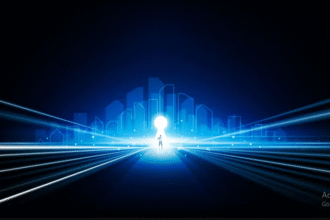As technology becomes more integrated into every aspect of our lives, the environmental impact of our digital footprint is coming under increasing scrutiny. The internet, while seemingly intangible, relies on vast physical infrastructure—data centers, servers, cooling systems—all of which consume enormous amounts of energy. For web developers, the concept of “green web development” is no longer just a niche concern; it’s a critical responsibility and a growing area of innovation.
Understanding the Digital Carbon Footprint:
Every time someone visits a website, data is transferred, processed, and stored, consuming electricity. From the energy used by your local device to the massive data centers powering the cloud, every click has an impact. A “green” or “sustainable” website aims to minimize this energy consumption throughout its lifecycle, from development to deployment and user interaction.
Key Principles of Green Web Development:
- Performance Optimization: One of the most impactful ways to reduce energy consumption is to make websites faster. Less data transfer, fewer server requests, and quicker loading times mean less energy used by servers, networks, and user devices.
Efficient Code & Minimal Resources:
-
- Lean Codebases: Write clean, efficient code. Avoid bloated frameworks or libraries where simpler solutions suffice. Every line of unnecessary code contributes to larger file sizes and more processing.
- Optimized Images & Media: Images and videos are often the heaviest elements on a page. Compress them effectively, use modern formats (like WebP), implement lazy loading, and consider responsive images to serve only what’s needed for the user’s device.
- Font Optimization: Host fonts locally if possible, and only load the weights and styles you absolutely need.
- Sustainable Hosting: The choice of web host matters significantly. Look for hosting providers that:
- Run on Renewable Energy: Many data centers are now powered entirely by solar, wind, or hydro energy.
- Employ Energy-Efficient Hardware: Modern servers and cooling systems are designed to be more energy-efficient.
- Are Transparent about their Practices: Reputable green hosts will provide information on their energy sources and carbon footprint.
- Smart Content Delivery (CDNs): Using Content Delivery Networks (CDNs) reduces the physical distance data has to travel from the server to the user, thereby reducing energy consumption and speeding up delivery.
- Dark Mode & Theming: While not always applicable, offering a “dark mode” option can significantly reduce energy consumption on OLED screens (common in many modern smartphones and monitors) as black pixels consume less power.
- Accessibility & Inclusivity: A truly sustainable web is also an accessible web. Building accessible sites means fewer users are excluded, reducing the need for them to find alternative, potentially less efficient, ways to access information.
Adopting green web development practices isn’t just about environmental responsibility; it also aligns with good performance, better user experience, and often reduced operational costs. As climate awareness grows, businesses and users alike will increasingly favor digital products that reflect a commitment to sustainability. Developers who prioritize these principles will be at the forefront of building a more efficient and environmentally conscious internet.





One Comment
Hi, this is a comment.
To get started with moderating, editing, and deleting comments, please visit the Comments screen in the dashboard.
Commenter avatars come from Gravatar.